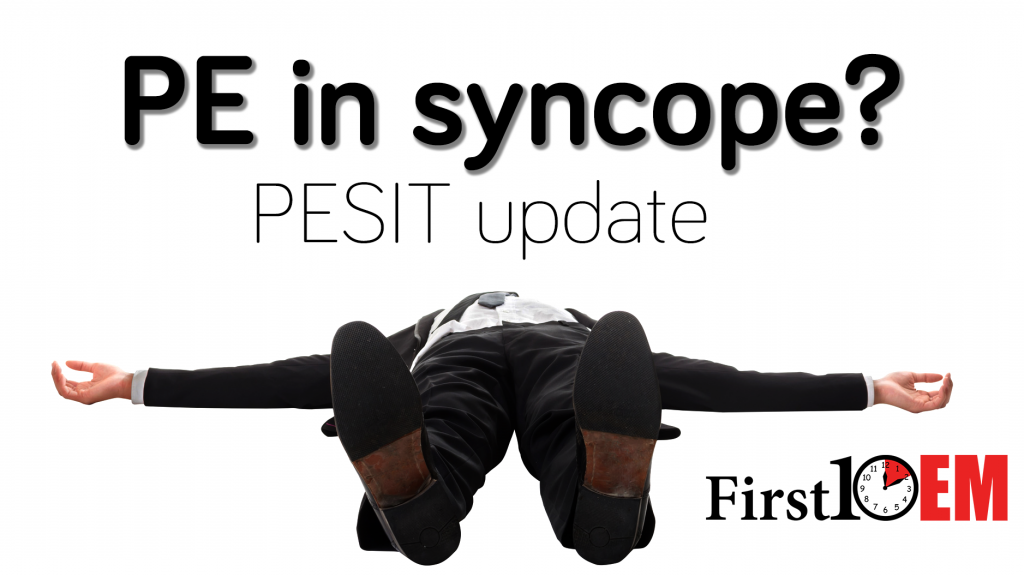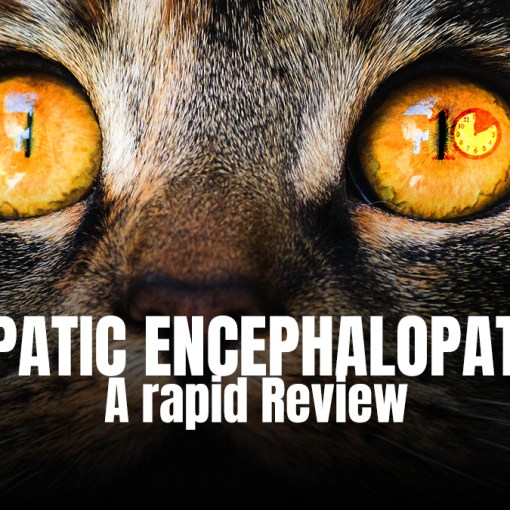By now, everyone has (unfortunately) heard about the PESIT trial. Given the many commentaries in the FOAM community, we are all familiar with the many reasons that the widely quoted 1 in 6 figure for PE in syncope probably does not apply to our patients. If you need a reminder, I summarize the paper as part of this post, or you can read a more elegant post by Rory Spiegel here. For me, the biggest issue was that PESIT never passed the sniff test. We see a ton of syncope patients. There are massive syncope databases. And nowhere have we seen massive numbers of patients returning with PE.
A research letter was just published yesterday in JAMA that gives us another take on the issue:
Verma AA, Masoom H, Rawal S, Guo Y, Razak F, for the GEMINI Investigators. Pulmonary Embolism and Deep Venous Thrombosis in Patients Hospitalized With Syncope: A Multicenter Cross-sectional Study in Toronto, Ontario, Canada. JAMA Intern Med. Published online May 08, 2017. doi:10.1001/jamainternmed.2017.1246
This is a database study. The database they were using only looks at patients admitted to the general medicine services at 4 hospitals, so we don’t know about the larger number of syncope patients seen in the ED and discharged home. Using the same inclusion and exclusion criteria as PESIT, they identified 1305 patients admitted with first time syncope. Ultimately, 11 were diagnosed with PE and 10 with DVT, resulting in a VTE prevalence of 1.4% (95%CI 0.9-2.2%). This is below the test threshold.
The major difference, aside from the country, was that unlike PESIT, not all patients received a workup. Only 73 patients had a CTPA or VQ scan, and another 67 had leg ultrasounds. Therefore, the yield of imaging when the physician thought it was warranted is actually quite high. To me, this represents ideal practice.
Of course, we don’t know what happened to all the patients who weren’t imaged. They didn’t get worse during this admission, which somewhat argues against VTE as the cause of syncope, but doesn’t exclude it. Without long term follow up, it is possible that this study underestimates prevalence. Unfortunately, just screening every syncope patient is not the answer, because although more testing will result in more findings, false positives and overdiagnosis mean this strategy won’t necessarily help patients.
Overall, I expect the numbers presented from this cohort are much closer to the truth than what we saw in the PESIT trial, but unfortunately the data is not strong enough to make any definitive statements. If the prevalence of VTE is only 1.4% among the patients we admit (and our admission rates for syncope are very low in Canada), the prevalence among all comers in the ED will be astronomically low. I think this data strongly supports the statement that syncope patients should not routinely be worked up for PE. (I actually think the numbers in PESIT support that statement as well). On the other hand, if a syncope patient has signs, symptoms, and or risk factors for PE, there is a reasonable chance that they have a PE.
Morgenstern, J. Quick PESIT update, First10EM, May 9, 2017. Available at:
https://doi.org/10.51684/FIRS.4618






3 thoughts on “Quick PESIT update”